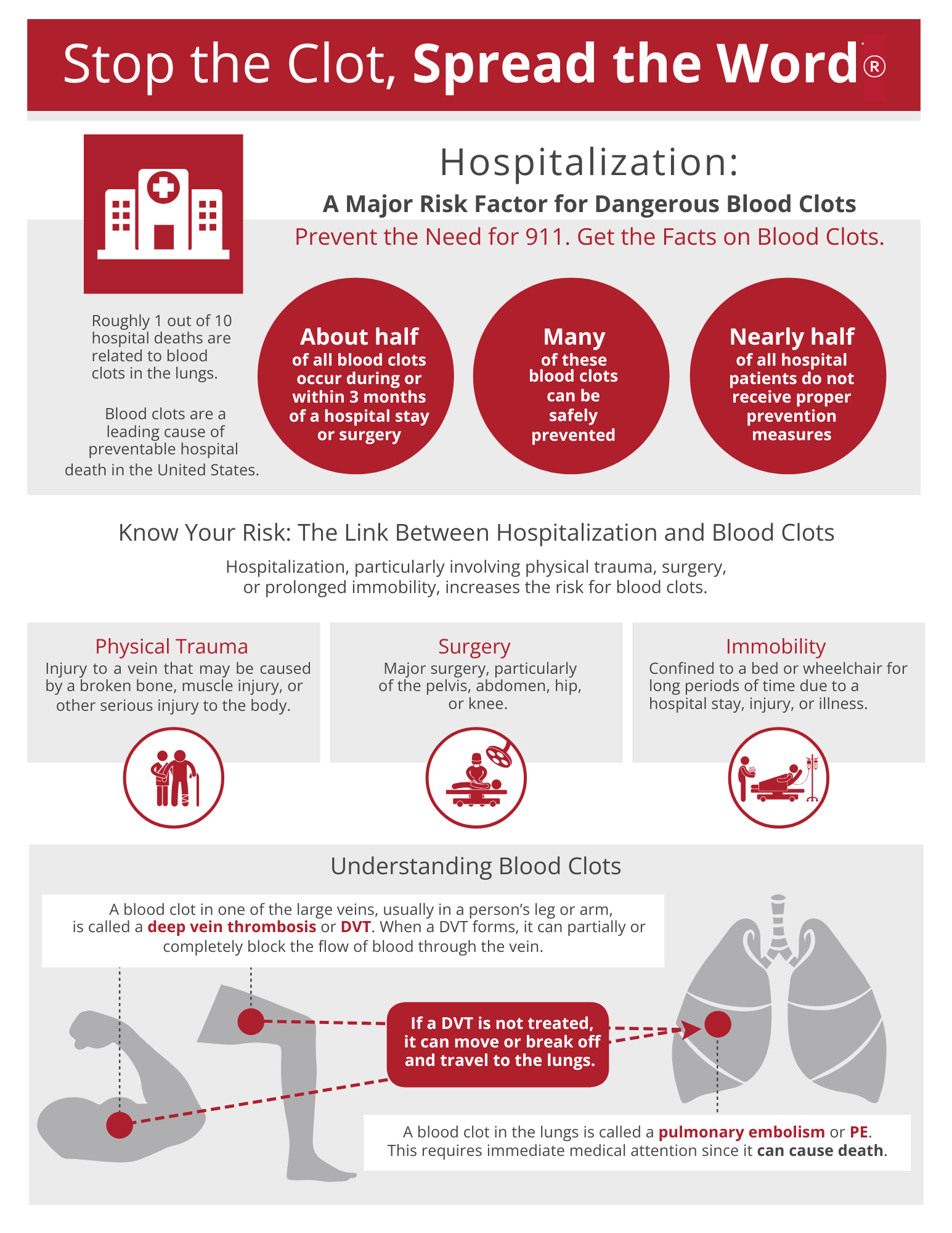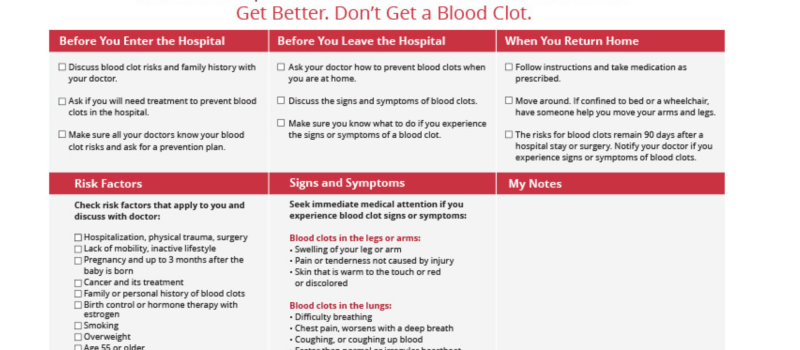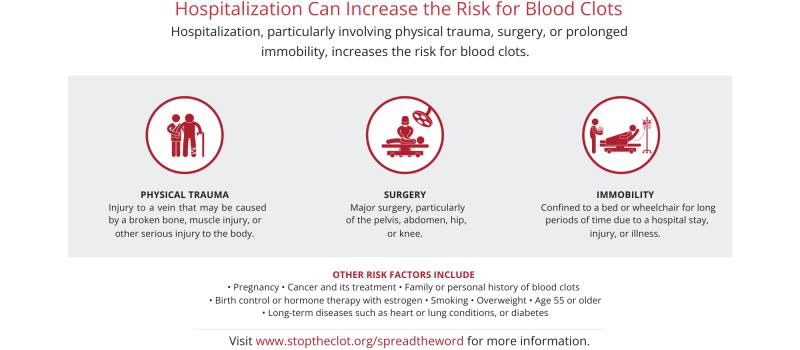Heading to the Hospital?
Get Better. Don’t Get a Blood Clot.
Get Better. Don’t Get a Blood Clot.
Spending time in the hospital is always a challenge and requires that you seek the best care. The last thing you need is another health problem or setback on your road to recovery.
It is important to know that being in the hospital places you at increased risk for the development of a deadly blood clot, particularly if you are dealing with surgery, a physical trauma, or a serious illness like cancer.
Blood clots occur most often in the legs or arms.
A blood clot in your leg or arm can travel to your lungs, which can be deadly.
Get the Facts
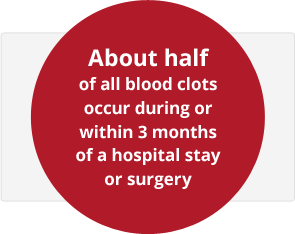
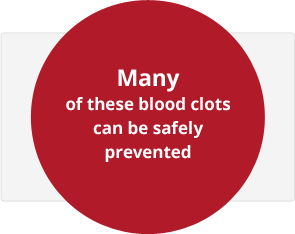
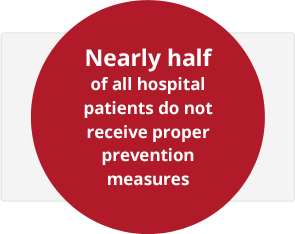
Hospitalization Risks
PHYSICAL TRAUMA
Injury to a vein that may be caused by a broken bone, muscle injury, or other serious injury to the body.
SURGERY
Major surgery, particularly of the pelvis, abdomen, hip, or knee.
IMMOBILITY
Confined to a bed or wheelchair for long periods of time due to a hospital stay, injury, or illness.
OTHER FACTORS THAT INCREASE THE RISK FOR BLOOD CLOTS INCLUDE
• Pregnancy • Cancer and its treatment • Personal or family history of blood clots • Birth control or hormone therapy with estrogen
• Smoking • Overweight • Age 55 or older • Long-term diseases such as heart and lung conditions, or diabetes
Have a Plan
Blood clots can be prevented.
They are a leading cause of preventable hospital death in the United States.
Make sure all of your doctors know your risk for blood clots and ask for a prevention plan.
They are a leading cause of preventable hospital death in the United States.
Make sure all of your doctors know your risk for blood clots and ask for a prevention plan.
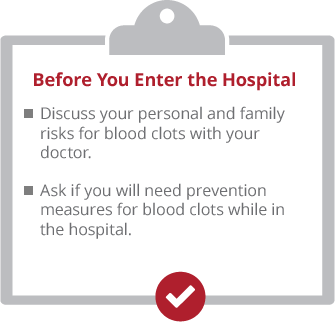
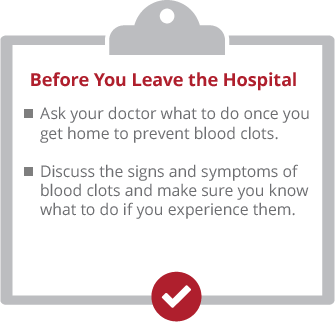
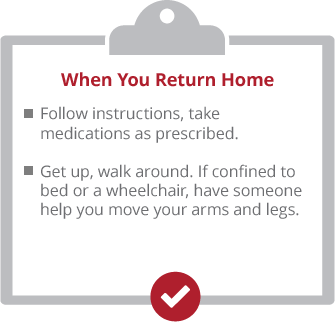
You may still be at risk for a blood clot for 90 days after you leave the hospital.
Tell your doctor if you experience any of the signs or symptoms of a blood clot.
SYMPTOMS OF A BLOOD CLOT
IN THE ARM OR LEG MAY INCLUDE
IN THE ARM OR LEG MAY INCLUDE
– Swelling –
– Pain or tenderness not caused by injury –
– Skin that is warm to the touch –
– Redness or discoloration of the skin –
– Pain or tenderness not caused by injury –
– Skin that is warm to the touch –
– Redness or discoloration of the skin –
If you have these signs or symptoms, alert your doctor as soon as possible.
SYMPTOMS OF A BLOOD CLOT
IN THE LUNG MAY INCLUDE
IN THE LUNG MAY INCLUDE
– Difficulty breathing –
– Chest pain that worsens with a deep breath –
– Coughing, coughing up blood –
– Faster than normal or irregular heartbeat –
– Chest pain that worsens with a deep breath –
– Coughing, coughing up blood –
– Faster than normal or irregular heartbeat –
Seek immediate attention if you experience these signs or symptoms.
Stop the Clot, Spread the Word®
The National Blood Clot Alliance and the Centers for Disease Control and Prevention are working on this important public health campaign to get the word out about blood clot risks and the signs and symptoms of blood clots.
You can be an important part of this education campaign by helping us
SPREAD THE WORD®
Please Share This Page
Other Campaign Items to Share
For more information about blood clots, visit:
The information and materials on this site are provided for general information purposes only. You should not rely on the information provided as a substitute for actual professional medical advice, care, or treatment. This site is not designed to and does not provide medical advice, professional diagnosis, opinion, treatment, or services to you or any individual. If you believe you have a medical emergency, call 911 immediately.
Stop the Clot, Spread the Word® is a public education campaign made possible by funding provided to the National Blood Clot Alliance by the Centers for Disease Control and Prevention under Cooperative Agreement number 1U27DD001153-02.

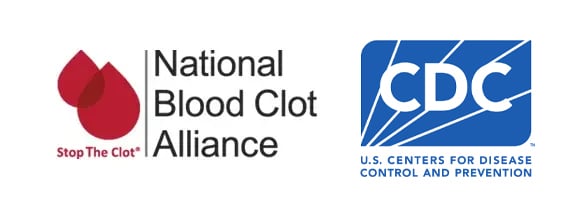
The mark ‘CDC’ is owned by the US Dept. of Health and Human Services and is used with permission. Use of this logo is not an endorsement by HHS or CDC of any particular product, service, or enterprise.

